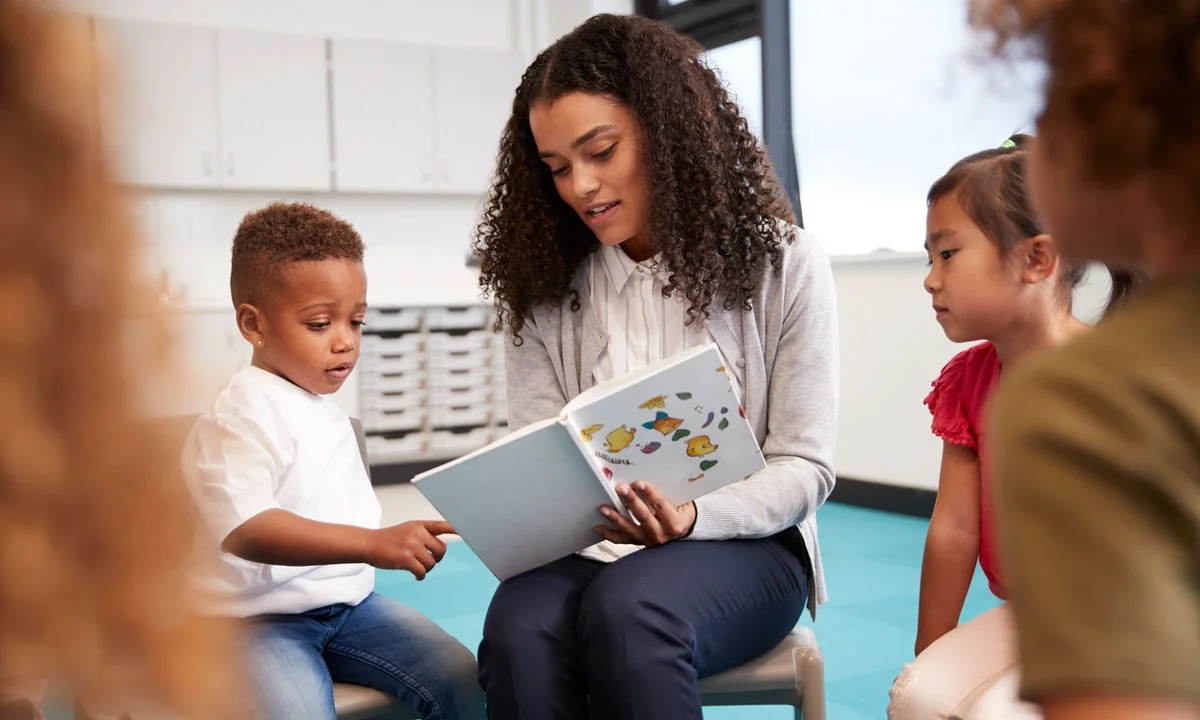he teacher helps the students read a book
he teacher helps the students read a book
The sentence above will help students to learn some words that will be taught in class.
Classroom-Related Vocabulary:
Teacher: Place both hands at the sides of your forehead (like holding a hat) and bring them downwards into two flat palms in front of you.
Student: Make a flat hand, and place your dominant hand on it (as if picking something up), then bring the dominant hand towards your head and finish with both hands flat and down.
Class: Form the letter "C" with both hands, then bring the hands together, forming a circle as you do.
School: Clap your hands together with palms flat, one on top of the other.
Book: Place your palms together and open them like opening a book.
Write: Hold an imaginary pencil in your dominant hand and move it across your non-dominant palm.
Paper: Similar to "School," but clap the hands together and slide one hand across the other.
Read: Hold your non-dominant hand flat (like a book), and use two fingers from your dominant hand to "scan" the page up and down.
2. Essential Actions:
Sit: Make a "U" shape with both hands, then rest your dominant hand "U" on top of your non-dominant hand.
Stand: Hold your non-dominant hand flat (like the ground), and place your dominant hand with two fingers (like legs) standing on the flat hand.
Help: Make a thumbs-up with your dominant hand and place it on the flat palm of your other hand, lifting both slightly upwards.
Stop: Bring the side of your dominant hand down onto the palm of your non-dominant hand.
3. Polite Expressions:
Please: Rub the flat palm of your hand in a circular motion over your chest.
Thank you: Place the fingertips of one hand on your chin and move your hand outward.
Sorry: Make an "A" shape (closed fist) and move it in a circle on your chest.
4. Common Objects:
Chair: The same as "sit" but repeated twice.
Pencil: Same motion as "write" but can be signed more distinctly by mimicking holding a pencil.
Desk/Table: Tap the top of your forearms together.
5. Numbers and Letters:
Teaching numbers 1-10 and basic alphabet letters in ASL can be very useful for counting, spelling, and more in a classroom setting.
